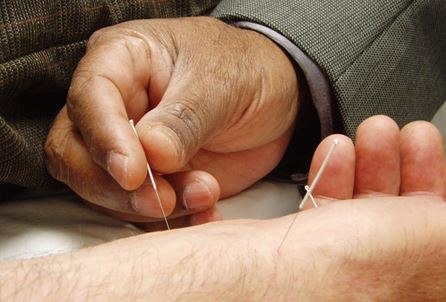NCCIH Classification

A United States government agency, the National Center on Complementary and Integrative Health (NCCIH), has created its own classification system for branches of complementary and alternative medicine.
A United States government agency, the National Center on Complementary and Integrative Health (NCCIH), has created its own classification system for branches of complementary and alternative medicine. It classifies complementary and alternative therapies into five major groups, which have some overlap and two types of energy medicine are distinguished: one, "Veritable" involving scientifically observable energy, including magnet therapy, colorpuncture and light therapy; the other "Putative" which invoke physically undetectable or unverifiable energy.
Alternative medicine practices and beliefs are diverse in their foundations and methodologies. The wide range of treatments and practices referred to as alternative medicine includes some stemming from nineteenth century North America, such as chiropractic and naturopathy, others, mentioned by Jütte, that originated in eighteenth- and nineteenth-century Germany, such as homeopathy and hydropathy and some that have originated in China or India, while African, Caribbean, Pacific Island, Native American, and other regional cultures have traditional medical systems as diverse as their diversity of cultures.
Examples of CAM as a broader term for unorthodox treatment and diagnosis of illnesses, disease, infections, etc. include yoga, acupuncture, aromatherapy, chiropractic, herbalism, homeopathy, hypnotherapy, massage, osteopathy, reflexology, relaxation therapies, spiritual healing and tai chi. CAM differs from conventional medicine. It is normally private medicine and not covered by health insurance. It is paid out of pocket by the patient and is an expensive treatment. CAM tends to be a treatment for upper class or more educated people.
The NCCIH classification system is -
· Whole medical systems: cut across more than one of the other groups; examples include traditional Chinese medicine, naturopathy, homeopathy, and ayurveda
· Mind-body interventions: explore the interconnection between the mind, body, and spirit, under the premise that the mind can affect "bodily functions and symptoms"
· "Biology"-based practices: use substances found in nature such as herbs, foods, vitamins, and other natural substances. (Note that as used here, "biology" does not refer to the science of biology, but is a usage newly coined by NCCIH in the primary source used for this article. "Biology-based" as coined by NCCIH may refer to chemicals from a nonbiological source, such as use of the poison lead in traditional Chinese medicine, and to other nonbiological substances.)
· Manipulative and body-based practices: feature manipulation or movement of body parts, such as is done in chiropractic and osteopathic manipulation
· Energy medicine: is a domain that deals with putative and verifiable energy fields:
1. Biofield therapies are intended to influence energy fields that, it is purported, surround and penetrate the body. No empirical evidence has been found to support the existence of the putative energy fields on which these therapies are predicated.
2. Bioelectromagnetic-based therapies use verifiable electromagnetic fields, such as pulsed fields, alternating-current, or direct-current fields in an unconventional manner.
Examples
Alternative therapies based on electricity or magnetism use verifiable electromagnetic fields, such as pulsed fields, alternating-current, or direct-current fields in an unconventional manner rather than claiming the existence of imponderable or supernatural energies.
Substance based practices use substances found in nature such as herbs, foods, non-vitamin supplements and megavitamins, and minerals, and includes traditional herbal remedies with herbs specific to regions in which the cultural practices arose. Nonvitamin supplements include fish oil, Omega-3 fatty acid, glucosamine, echinacea, flaxseed oil or pills, and ginseng, when used under a claim to have healing effects.
Mind-body interventions, working under the premise that the mind can affect "bodily functions and symptoms" include healing claims made in hypnotherapy and in guided imagery, meditation, progressive relaxation, qi gong, tai chi and yoga. Meditation practices including mantra meditation, mindfulness meditation, yoga, tai chi, and qi gong have many uncertainties. According to an AHRQ review, the available evidence on meditation practices through September 2005 is of poor methodological quality and definite conclusions on the effects of meditation in healthcare cannot be made using existing research.
Naturopathy is based on a belief in vitalism, which posits that a special energy called vital energy or vital force guides bodily processes such as metabolism, reproduction, growth, and adaptation. The term was coined in 1895 by John Scheel and popularized by Benedict Lust, the "father of U.S. naturopathy". Today, naturopathy is primarily practiced in the United States and Canada. Naturopaths in unregulated jurisdictions may use the Naturopathic Doctor designation or other titles regardless of level of education.
Traditional Chinese medicine is based on a concept of vital energy, or Qi flowing in the body along specific pathways. These purported pathways consist of 12 primary meridians. TCM has many branches including, acupuncture, massage, feng shui, herbs, as well as Chinese astrology. TCM diagnosis is primarily based on looking at the tongue, which is claimed to show the condition of the organs, as well as feeling the pulse of the radial artery, which is also claimed to show the condition of the organs.
